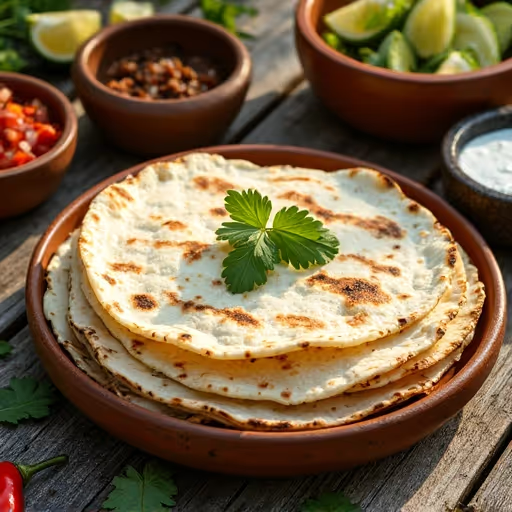Grillwisehub FAQ for:
Grilled BBQ Lamb Ribs
What's the best way to maintain moisture in lamb ribs during the grilling process?
To maintain moisture in your lamb ribs while grilling, follow these key techniques: First, spritzing the meat every 30 minutes (with apple juice for traditional version or chicken broth for low-calorie version) creates a consistent moisture barrier. Second, the crucial foil-wrapping stage after 2 hours (known as the "Texas crutch" in BBQ circles) traps steam and helps break down tough connective tissues. For the best results, ensure your grill maintains a steady temperature of 135°C (275°F) for traditional or 120°C (250°F) for the low-calorie version. Remember that the final internal temperature of 88-93°C (190-200°F) indicates properly rendered fat and collagen, yielding tender, juicy meat. Avoid the common mistake of unwrapping too early or cooking at temperatures that are too high, which can dry out the ribs.
How can I adapt this recipe for dietary restrictions while maintaining flavour?
For dietary adaptations that maintain the rich flavour profile: For keto/low-carb diets, use the low-calorie version but replace monk fruit sweetener with erythritol or allulose at the same measurement, reducing net carbs to approximately 2g per serving. For gluten-free needs, this recipe is naturally compliant, but verify your paprika brand is certified gluten-free. For reduced sodium requirements, cut the kosher salt to 1½ teaspoons (7.5g) and use unsalted chicken broth, which reduces sodium content by approximately 40%. For nightshade-free diets, replace smoked paprika with 1½ teaspoons (7.5g) of ground cumin plus ½ teaspoon (2.5g) smoked salt. For those avoiding refined sweeteners altogether, substitute with 1 tablespoon (15g) of puréed dates or applesauce, though this will slightly increase carbohydrate content.
What are the most common mistakes when preparing lamb ribs and how can I avoid them?
The most common mistakes when preparing lamb ribs include: Not removing the membrane (prevents seasoning penetration and creates tough texture—always remove it completely using a butter knife and paper towel for grip). Rushing the cooking process (lamb ribs need slow cooking to properly render fat—maintain consistent temperature and follow recommended cooking times). Inadequate seasoning time (the 30-minute rest period is crucial for flavour development—don't skip this step). Inconsistent temperature control (fluctuations can lead to uneven cooking—use a reliable grill thermometer). Cutting immediately after cooking (skipping the 15-20 minute rest period causes moisture loss—be patient and allow proteins to reabsorb juices). Over-trimming fat for the low-calorie version (some fat is needed for flavour—trim excess but don't remove all fat). Remember that lamb ribs have a different fat composition than pork or beef ribs, making proper cooking technique even more important for tender results.
How does the nutritional profile of these lamb ribs fit into various fitness goals?
The nutritional profiles of both lamb rib versions support different fitness goals: The traditional recipe (380 calories, 28g protein, 28g fat, 5g carbs) offers a 1:1 protein-to-fat ratio (48% protein, 48% fat) ideal for ketogenic or low-carb diets. It provides high satiety and sustained energy for endurance athletes. The low-calorie version (260 calories, 30g protein, 16g fat, 3g carbs) shifts to a 63:34 protein-to-fat ratio, better supporting muscle building or cutting phases. This version reduces calories by 31% while increasing protein by 7%, primarily by trimming visible fat and using monk fruit sweetener. Lamb protein offers complete amino acid profiles with particularly high levels of immune-supporting zinc (providing approximately 30% of daily requirements per serving) and vitamin B12 (approximately 60% of daily requirements per serving). For intermittent fasting protocols, the higher fat traditional version may work better for longer satiety during eating windows, while the leaner version supports caloric deficit goals without sacrificing protein intake.
What's the best way to store and reheat leftover lamb ribs without drying them out?
For optimal storage and reheating of leftover lamb ribs: Refrigerate properly by cooling ribs within 2 hours of cooking, then wrapping tightly in foil or storing in an airtight container for up to 3 days in the refrigerator at 4°C (40°F) or below. For longer storage, freeze ribs in vacuum-sealed bags or heavy-duty freezer bags with air removed for up to 2 months. When reheating from refrigerated state (never bring to room temperature first), the best method is to wrap ribs in foil with 2 tablespoons (30ml) of water or broth added, then heat in a 150°C (300°F) oven for 20-25 minutes until they reach an internal temperature of 74°C (165°F). For smoker reheating, use 107°C (225°F) for 30 minutes with ribs wrapped in foil. For a quicker option, place vacuum-sealed ribs in a sous vide bath at 74°C (165°F) for 45 minutes. Microwave reheating is possible but not recommended as it tends to toughen the meat. Always reheat leftover lamb ribs only once for food safety.






